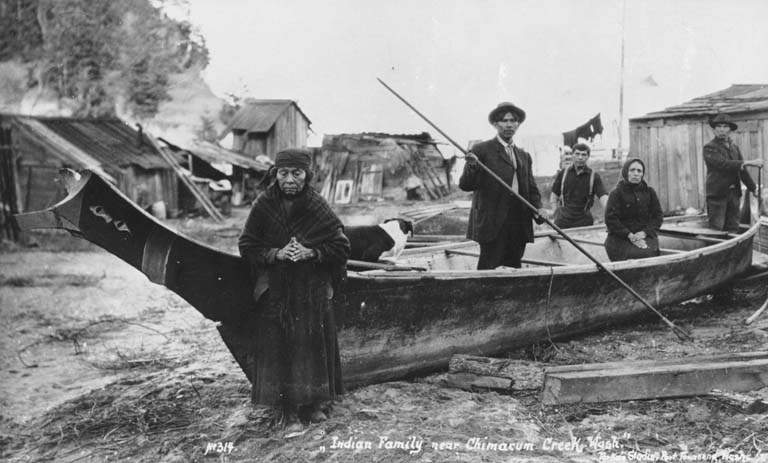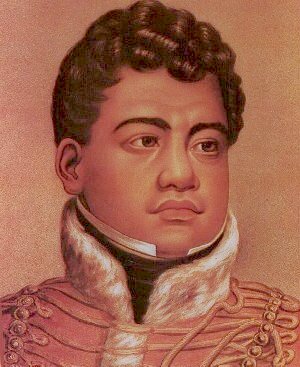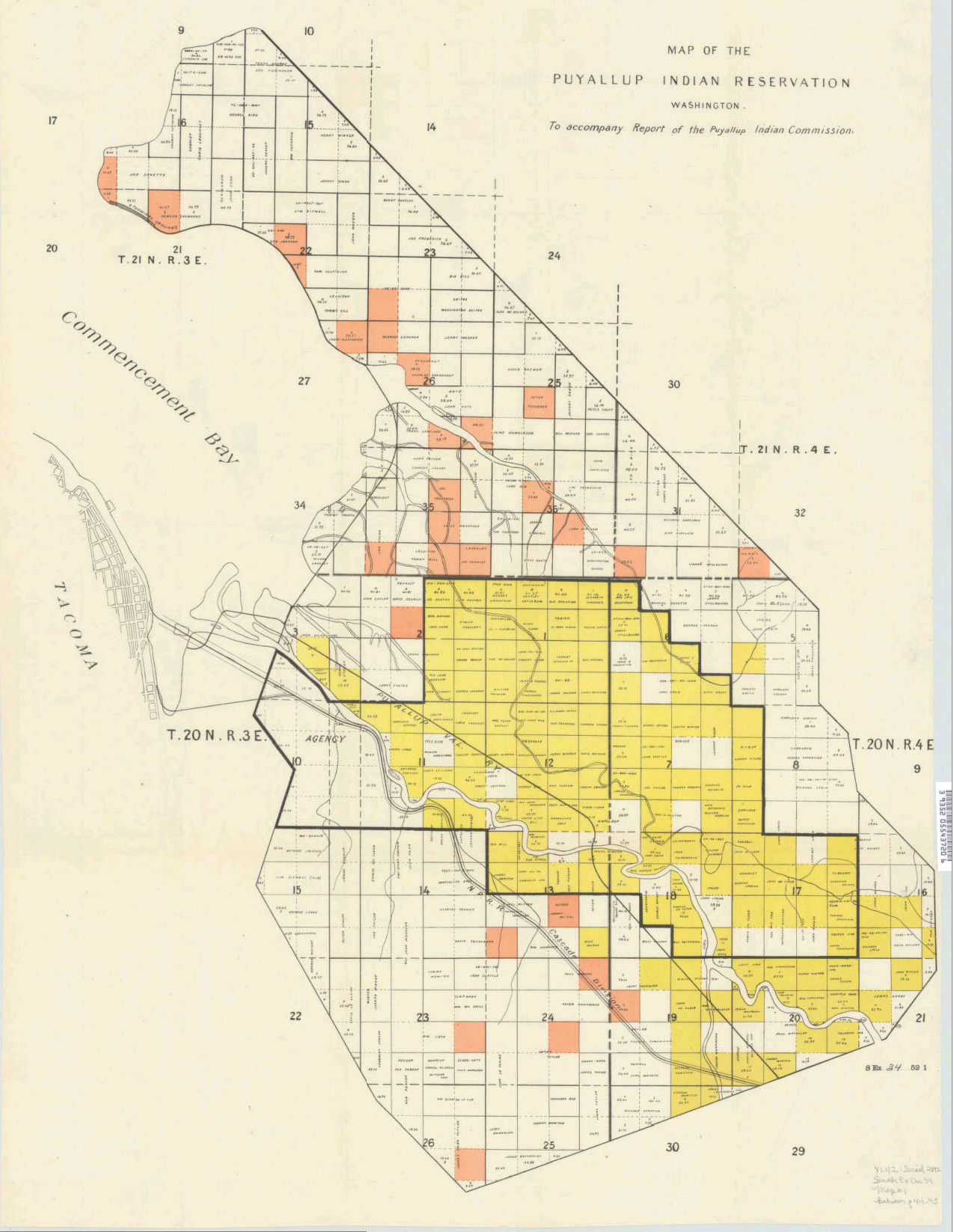|
Fort Nisqually
Fort Nisqually was an important fur trade, fur trading and farming post of the Hudson's Bay Company in the Puget Sound area, part of the Hudson's Bay Company's Columbia Department. It was located in what is now DuPont, Washington. Today it is a Historical reenactment, living history museum located in Tacoma, Washington, USA, within the boundaries of Point Defiance Park. The Fort Nisqually Granary, moved along with the Factor's House from the original site of the second fort to this park, is a U.S. National Historic Landmark. Built in 1843, the granary is the oldest building in Washington state and one of the only surviving examples of a Hudson's Bay Company "post-and-plank" structure. The Factor's House and the granary are the only surviving Hudson's Bay Company buildings in the United States. Foundation The Hudson's Bay Company expanded to the west coast by forming the Columbia District to oversee its operations in what was known by American interests as the Oregon Country. F ... [...More Info...] [...Related Items...] OR: [Wikipedia] [Google] [Baidu] |
DuPont, Washington
DuPont is a city in Pierce County, Washington, Pierce County, Washington (state), Washington, United States. The population was 10,151 at the 2020 United States census, 2020 census. Originally a company town, the city is named after the DuPont chemical company which operated an explosives manufacturing plant in the area from 1909 to 1975. History There was a Native American presence in the area for the last 10,000 years. At the time of contact the Nisqually people, Nisqually Tribe lived in relative peace and prosperity in their aboriginal homeland of about two million acres (810,000 ha) near the present-day towns of Olympia, Washington, Olympia, Tenino, Washington, Tenino, and DuPont, and extending to Mount Rainier. Tribal life changed radically with the advent of Euro-American settlement about 150 years ago. Forced to compromise its interests and rights over the years, the Tribe always sought to maintain its integrity and dignity. Subsisting on shellfish from the beaches and salm ... [...More Info...] [...Related Items...] OR: [Wikipedia] [Google] [Baidu] |
S'Klallam
The Klallam (; also known as the S'Klallam or Clallam) are a Coast Salish people Indigenous to the northern Olympic Peninsula. The language of the Klallam is the Klallam language (), a language closely related to the North Straits Salish languages. The Klallam are today citizens of four recognized bands: Three federally-recognized tribes in the United States and one band government in Canada. Two Klallam tribes, the Jamestown S'Klallam and Lower Elwha Klallam, live on the Olympic Peninsula, and one, the Port Gamble S'Klallam, on the Kitsap Peninsula in Washington state. In Canada, the Scia'new First Nation is based at Becher Bay on southern Vancouver Island in British Columbia. Name and etymology The Klallam-language name for the tribe is (meaning "strong people"). According to the oral history of the Klallam, the name was earned after the tribe won a challenge around hoisting a log onto a house. They put the log in the water, and then floated it onto their should ... [...More Info...] [...Related Items...] OR: [Wikipedia] [Google] [Baidu] |
Beaver
Beavers (genus ''Castor'') are large, semiaquatic rodents of the Northern Hemisphere. There are two existing species: the North American beaver (''Castor canadensis'') and the Eurasian beaver (''C. fiber''). Beavers are the second-largest living rodents, after capybaras, weighing up to . They have stout bodies with large heads, long chisel-like incisors, brown or gray fur, hand-like front feet, webbed back feet, and tails that are flat and scaly. The two species differ in skull and tail shape and fur color. Beavers can be found in a number of freshwater habitats, such as rivers, streams, lakes and ponds. They are herbivorous, consuming tree bark, aquatic plants, grasses and sedges. Beavers build dams and lodges using tree branches, vegetation, rocks and mud; they chew down trees for building material. Dams restrict water flow, forming ponds, and lodges (usually built in ponds) serve as shelters. Their infrastructure creates wetlands used by many other species, a ... [...More Info...] [...Related Items...] OR: [Wikipedia] [Google] [Baidu] |
West Indies
The West Indies is an island subregion of the Americas, surrounded by the Atlantic Ocean, North Atlantic Ocean and the Caribbean Sea, which comprises 13 independent island country, island countries and 19 dependent territory, dependencies in three archipelagos: the Greater Antilles, the Lesser Antilles, and the Lucayan Archipelago. The subregion includes all the islands in the Antilles, in addition to The Bahamas and the Turks and Caicos Islands, which are in the Atlantic Ocean, North Atlantic Ocean. The term is often interchangeable with "Caribbean", although the latter may also include coastal regions of Central America, Central and South American mainland nations, including Mexico, Belize, Honduras, Panama, Colombia, Venezuela, French Guiana, Guyana, and Suriname, as well as the Atlantic Ocean, Atlantic island nation of Bermuda, all of which are geographically distinct from the three main island groups, but culturally related. Terminology The English term ''Indie'' is deri ... [...More Info...] [...Related Items...] OR: [Wikipedia] [Google] [Baidu] |
Métis In Canada
The Métis ( , , , ) are a mixed-race Indigenous people whose historical homelands include Canada's three Prairie Provinces extending into parts of Ontario, British Columbia, the Northwest Territories and the northwest United States. They have a shared history and culture, deriving from specific mixed European (primarily French, Scottish, and English) and Indigenous ancestry (primarily Cree with strong kinship to Cree people and communities), which became distinct through ethnogenesis by the mid-18th century, during the early years of the North American fur trade. In Canada, the Métis, with a population of 624,220 as of 2021, are one of three legally recognized Indigenous peoples in the ''Constitution Act, 1982'', along with the First Nations and Inuit. The term ''Métis'' (uppercase 'M') typically refers to the specific community of people defined as the Métis Nation, which originated largely in the Red River Valley and organized politically in the 19th century, radiating ... [...More Info...] [...Related Items...] OR: [Wikipedia] [Google] [Baidu] |
French-Canadians
French Canadians, referred to as Canadiens mainly before the nineteenth century, are an ethnic group descended from French colonists first arriving in France's colony of Canada in 1608. The vast majority of French Canadians live in the province of Quebec. During the 17th century, French settlers originating mainly from the west and north of France settled Canada. It is from them that the French Canadian ethnicity was born. During the 17th to 18th centuries, French Canadians expanded across North America and colonized various regions, cities, and towns. As a result, people of French Canadian descent can be found across North America. Between 1840 and 1930, many French Canadians emigrated to New England, an event known as the Grande Hémorragie. Etymology French Canadians get their name from the French colony of Canada, the most developed and densely populated region of New France during the period of French colonization in the 17th and 18th centuries. The original use of ... [...More Info...] [...Related Items...] OR: [Wikipedia] [Google] [Baidu] |
Kanaka (Pacific Island Worker)
Kanakas were workers (a mix of voluntary and involuntary) from various Pacific Islands employed in British colonies, such as British Columbia (Canada), Fiji, Solomon Islands, Vanuatu, Papua New Guinea, and Queensland (Australia) in the 19th and early 20th centuries. They also worked in California (United States) and Chile (see also Easter Island and the Rapa Nui). "Kanaka" originally referred only to Native Hawaiians, from their own name for themselves, ''kānaka ʻōiwi'' or ''kānaka maoli'', ''kānaka'' meaning "man" in the Hawaiian language. In the Americas in particular, native Hawaiians were the majority; but Kanakas in Australia were almost entirely Melanesian. In Australian English "kanaka" is now avoided outside of its historical context, as it has been used as an offensive term. Australia According to the ''Macquarie Dictionary'', the word "kanaka", which was once widely used in Australia, is now regarded in Australian English as an offensive term for a Pacific I ... [...More Info...] [...Related Items...] OR: [Wikipedia] [Google] [Baidu] |
Native Hawaiian
Native Hawaiians (also known as Indigenous Hawaiians, Kānaka Maoli, Aboriginal Hawaiians, or simply Hawaiians; , , , and ) are the Indigenous peoples of Oceania, Indigenous Polynesians, Polynesian people of the Hawaiian Islands. Hawaiʻi was settled at least 800 years ago by Polynesians who sailed from the Society Islands. The settlers gradually became detached from their homeland and developed a distinct Hawaiian culture and identity in their new home. They created new religious and cultural structures, in response to their new circumstances and to pass knowledge from one generation to the next. Hence, the Hawaiian religion focuses on ways to live and relate to the land and instills a sense of community. The Hawaiian Kingdom was formed in 1795, when Kamehameha the Great, of the then-independent Hawaii (island), island of Hawaiʻi, conquered the independent islands of Oʻahu, Maui, Molokaʻi, and Lānaʻi to form the kingdom. In 1810, Kauaʻi and Niʻihau joined the Kingdom, the ... [...More Info...] [...Related Items...] OR: [Wikipedia] [Google] [Baidu] |
Puyallup Tribe
The Puyallup Tribe of Indians ( ; ; commonly known as the Puyallup Tribe) is a federally-recognized tribe of Puyallup people from western Washington state, United States. The tribe is primarily located on the Puyallup Indian Reservation, although they also control off-reservation trust lands. The Puyallup Tribe was established in 1936 after the Indian Reorganization Act, although the reservation was established in 1854 in the Treaty of Medicine Creek. Currently, the tribe has approximately 4,000 citizens. Its membership is descended from the aboriginal Puyallup peoples, as well as other non-Puyallup peoples who were moved to the reservation. Other Puyallup citizens are descendants of other tribes. The population of Puyallup citizens who reside on the reservation is 2,500, which is 3.2% of the reservation's 41,000 total population. The tribe's government is enshrined in its constitution, and is composed of an elected government, the Puyallup Tribal Council, and the three triba ... [...More Info...] [...Related Items...] OR: [Wikipedia] [Google] [Baidu] |
Steilacoom (tribe)
The Steilacoom people () are Lushootseed-speaking Southern Coast Salish people, indigenous to the southern Puget Sound region of Washington state. Name The name Steilacoom is an anglicization of their Lushootseed endonym. In their native Lushootseed language, their name is . The name is derived from , the name of the main Steilacoom village in historic times. The name means "near the water." In English, the Steilacoom have also been called Stailakoom, Chillacum, Scht'ilaqwam, Steilacoomamish, Steilaquamish, Steilakumamish, and Stelakubalish. Territory and subdivisions By 1855, the Steilacoom controlled a large portion (approximately 10,000 acres) of the Tacoma Basin and the nearby coastline, with their core land base being the area surrounding Steilacoom Creek and what is now Steilacoom, Washington. Within their territory were two major waterways: Steilacoom Creek () and Sequalitchew Creek (). The islands of Anderson, McNeil, and Fox were also used by the Steilacoom. T ... [...More Info...] [...Related Items...] OR: [Wikipedia] [Google] [Baidu] |
Steilacoom (chief)
Steilacoom may refer to: People * Steilacoom people, an historical Coast Salish tribe who lived near the Puget Sound * Steilacoom Tribe of Indians, a contemporary heritage group, unrecognized as a tribe Places * Fort Steilacoom, a former US Army outpost near Lake Steilacoom * Fort Steilacoom Park, the largest park in Lakewood, Washington * Lake Steilacoom, a lake in Pierce County, Washington, approximately 2.5 miles southwest of Tacoma, Washington * Steilacoom Creek, an older name for Chambers Creek, in Washington State * Steilacoom, Washington, a town in Pierce County, Washington * Colloquially, in Washington State, "Steilacoom" is also used to refer to Western State Hospital, although the hospital is actually in the neighboring city of Lakewood, Washington {{disambig, geo ... [...More Info...] [...Related Items...] OR: [Wikipedia] [Google] [Baidu] |
William Fraser Tolmie
William Fraser Tolmie ( "Dr. Tolmie") (February 3, 1812 – December 8, 1886) was a surgeon, fur trader, scientist, and politician. He was born in Inverness, Scotland, in 1812, and by 1833 moved to the Pacific Northwest in the service of the Hudson's Bay Company (HBC). He served for two years, 1832-33 at Fort McLoughlin. He served at Fort Nisqually, an HBC post at the southern end of Puget Sound, from 1843 to 1859. In 1859 he moved to Victoria, British Columbia, where he continued serving the HBC as well as becoming active in politics. His written works include ''Comparative Vocabulary of the Indian Tribes of British Columbia'' (1884), and his journals, published in 1963 as ''The Journals of William Fraser Tolmie''. Early career At the age of 20, having spent 3 years attending medical classes at the University of Glasgow, Tolmie qualified as a Licentiate of the Faculty of Physicians and Surgeons of Glasgow, after which he joined the Hudson's Bay Company and soon saile ... [...More Info...] [...Related Items...] OR: [Wikipedia] [Google] [Baidu] |





